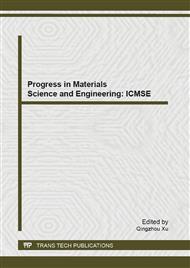p.673
p.677
p.682
p.689
p.695
p.700
p.707
p.712
p.717
The Effect of Residual Stress on Fatigue Life of Welded Cruciform Joints of 16MnR for Train Bogie
Abstract:
The weld toe surface and its nearby area of welded cruciform joints were treated by ultrasonic impact. Under the same stress concentration and after heat treatment to eliminate residual stress, the effect of residual stress on the fatigue life of joint was researched. The fatigue tests are performed on the joints of 16MnR both for the un-treated and treated joints by using EHF-EM200K2-070-1A type fatigue tester when the load ratio is 0.1, frequency is 10Hz. The experimental results indicate that the severe plastic deformation in the vicinity of weld toe surface was formed by impact treating for 2 minutes, the thickness of the plastic deformation layer is about 60μm. Residual tensile stress in the weld toe surface can be changed to residual compressive stress by impact treatment. The fatigue life of welded joint is 0.260×106 cycle, and the fatigue life of treated joint is 0.499×106 cycle. Compared to the un-treated joint, the fatigue life of treated joint has been increased by 91.92%. The residual stress contributed to fatigue life is about 16%. Residual stress has great effect on the fatigue life of welded cruciform joint.
Info:
Periodical:
Pages:
695-699
Citation:
Online since:
October 2013
Authors:
Keywords:
Price:
Сopyright:
© 2013 Trans Tech Publications Ltd. All Rights Reserved
Share:
Citation:


